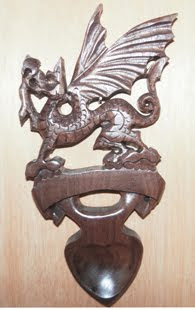
You may be short of ideas as to what to get your loved one in the run up to Valentine’s Day. Roses and chocolates may spring to mind, but for a more unique gift how about a lovespoon?
I decided to find out more about lovespoons with my fellow journalist Katie Prescott.
Lovespoons could be seen as just another souvenir that’s found in a tourist shop but the skill of hand carving wooden lovespoons is not dying out. The custom began almost 400 years ago, when the spoons were carved by young Welsh men as a proposal gift, and symbol of their love. Throughout Wales, many people still carry on the tradition, selling lovespoons to customers all over the world. Lovespoons can be personalised and specifically designed to cater for anyone. It can take hours to create a Lovespoon depending on how intricate the pattern is.
Edwin Williams owns a family-run workshop near Swansea. His wife and son help to create a vast array of lovespoons which he sells to shops in Cardiff, Swansea and even across the continent. Edwin has been carving lovespoons for over thirty years. It’s a profession that keeps him and his family busy all year round. But there is a greater demand on Valentines Day and St Dwynwen’s day for people that a more long lasting gift than flowers.
First a template is drawn onto a block of wood and cut out by machine. Then most of the intricate patterns are created by chisel and hammer. They vary in all shapes and sizes and are sold throughout the year, often commissioned for special occasions. They are not just a memento of Wales but a special love token and part of Welsh heritage. From bells, chains and daffodils to dragons and fish, the symbols that can be worked into the spoons are endless.
David Western learnt the trade growing up in Cardiff. He now works full time, carving lovespoons in Canada. Initially his customers came from mainly Welsh backgrounds, but he’s seeing a growing demand for the art from all nationalities “today probably 30-45% of my customers have a Welsh background and the rest have no links to Wales at all…they just like the idea of the lovespoon”.
David believes that to really make a lovespoon, the artist needs to invest “time, talent and emotion. When any of those are missing from the equation, you are left with a wooden stick”.
Here in Cardiff you can see the world's largest lovespoon which was made in 1994 and commissioned by S4C. It resides in the Wales Lovespoon Gallery opposite Cardiff Castle. It was carved out of a single sycamore tree by Ed Harrison of Llandysul and is over 8 metres long. The Wales Lovespoon Gallery is also home to the smallest lovespoon which is almost two thirds the size of a match.

No comments:
Post a Comment